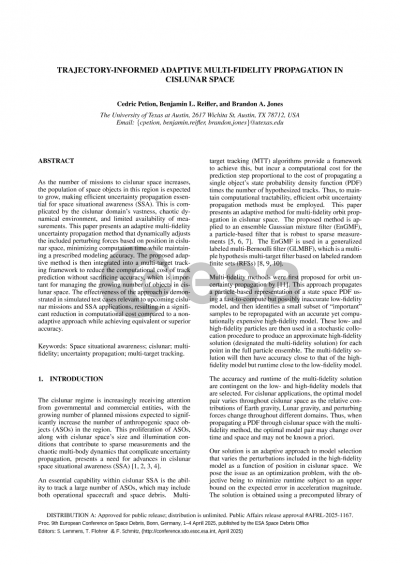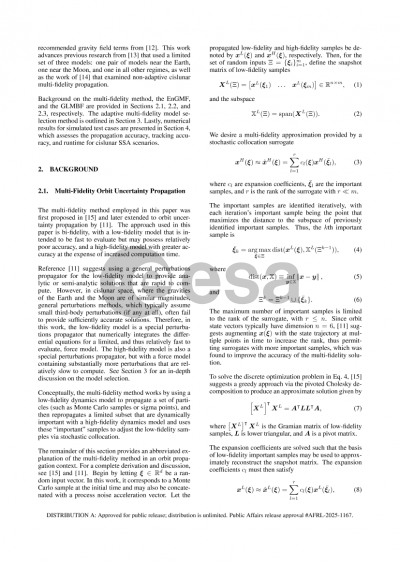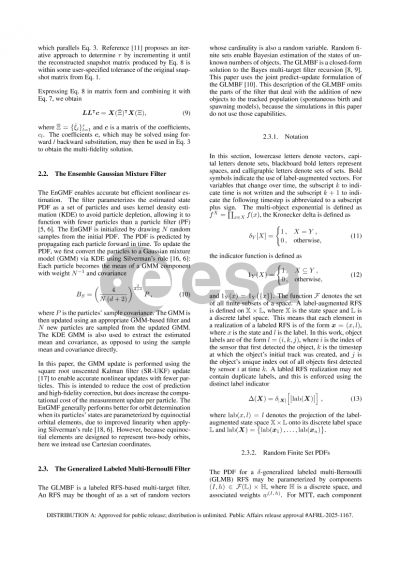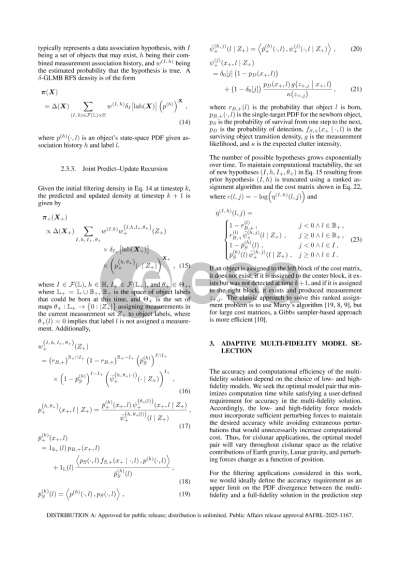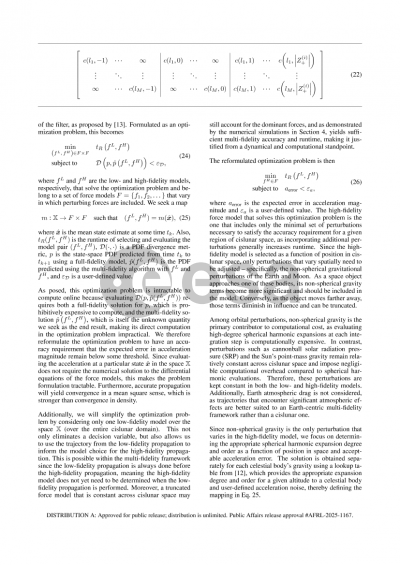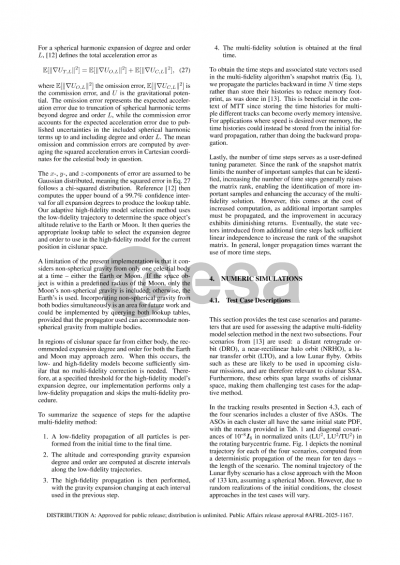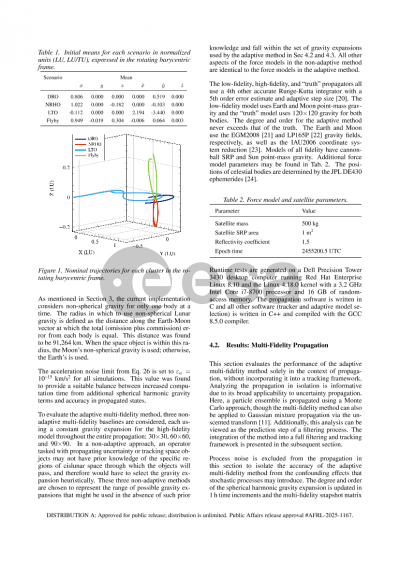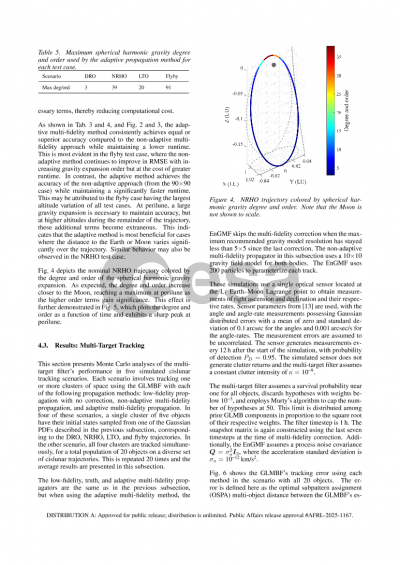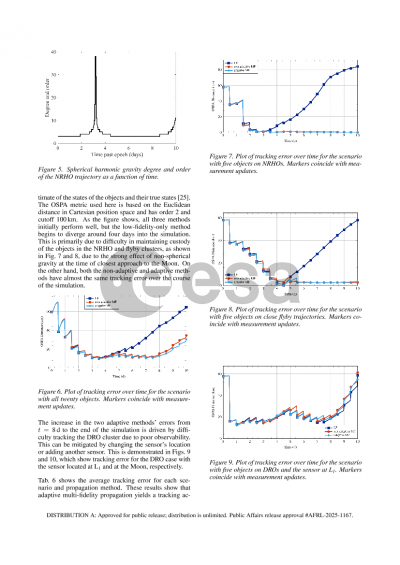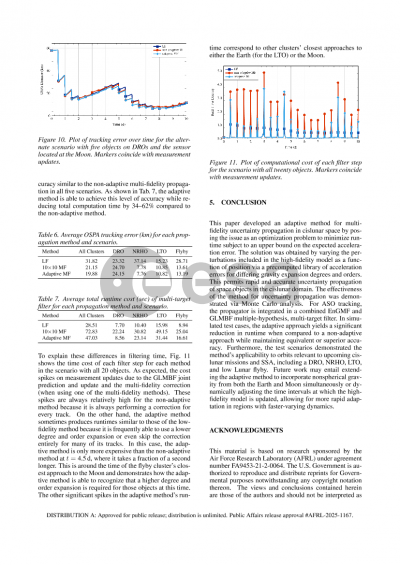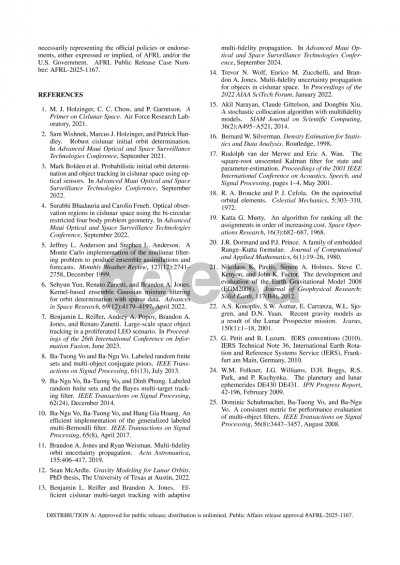Document details

Abstract
The cislunar region is receiving increased attention from governments and companies for future space missions. This will lead to growth in the number of objects in cislunar space, including space debris. Cislunar space situational awareness (SSA) is made more challenging by the chaotic dynamics of the cislunar region and sparseness of observations due to illumination conditions. Dealing with these challenges necessitates accurate orbit uncertainty propagation, but accurate propagation carries a significant computational cost per object. Therefore, in order to handle a growing cislunar population, we seek to develop a method for efficient orbit uncertainty propagation in the cislunar region.
This paper presents continuing work to develop a method for adaptive multi-fidelity orbit uncertainty propagation in cislunar space. Given a particle-based representation of an object's state-space probability density function, multi-fidelity propagation uses a low-fidelity dynamics model to propagate the particles, then repropagates a handful of them with a high-fidelity dynamics model and uses these "important samples" to adjust the low-fidelity samples.
At the 2024 AMOS Conference, we showed that computational efficiency of multi-fidelity propagation can be optimized without compromising tracking accuracy by selecting the low- and high-fidelity dynamics models based on an object's estimated state at the beginning of each prediction step. That implementation used a limited set of three models: one pair of models near the Earth, one near the Moon, and one in all other regimes. In this paper, we present a more rigorous implementation with a larger set of models and new simulation results with the updated methodology.
We propose a cislunar multi-fidelity propagation framework that uses one low-fidelity model across all orbital regimes, as well as a heuristic formula that uses the results of a low-fidelity propagation to determine the appropriate high fidelity model to minimize computation time while satisfying a maximum error bound. By using one low-fidelity model, we are able to eliminate a decision variable in determining an optimal model pair for a particular orbital regime. Work in this area will entail determining the perturbations to include in the low-fidelity model based on their importance across cislunar space and their impact on computation time.
Using one low-fidelity model will also allow us to use the information from the low-fidelity propagation to inform the model choice for the high-fidelity propagation. Variation in the high-fidelity model is justified due to differing dynamics across cislunar space. For instance, when a spacecraft is far from the Moon, the expansion used for the gravity field may be be truncated to decrease computation time without sacrificing much accuracy. As opposed to our previous approach, our new approach will perform the low-fidelity propagation before selecting the high-fidelity model. Then, the low-fidelity trajectory information will be used in a heuristic formula to determine the high-fidelity model. This formula is the main contribution of our work. Useful information that can be leveraged from the low-fidelity propagation includes the orbital regimes the low-fidelity trajectories pass through, the number of integration steps used, and the number of important samples.
To assess the performance of our proposed adaptive method, results will be presented in the form of simulated test cases to quantify run time and accuracy. The test cases will be conducted primarily on orbits of interest to cislunar SSA, such as periodic orbits (e.g. halo orbits) and transfer orbits that upcoming missions will be using. Our adaptive multi-fidelity method will enable rapid and highly accurate propagation of uncertainty in these regions to facilitate efficient SSA as cislunar space grows increasingly congested.
DISTRIBUTION A: Approved for public release; distribution is unlimited. Public Affairs release approval #AFRL-2024-6110.
Preview
